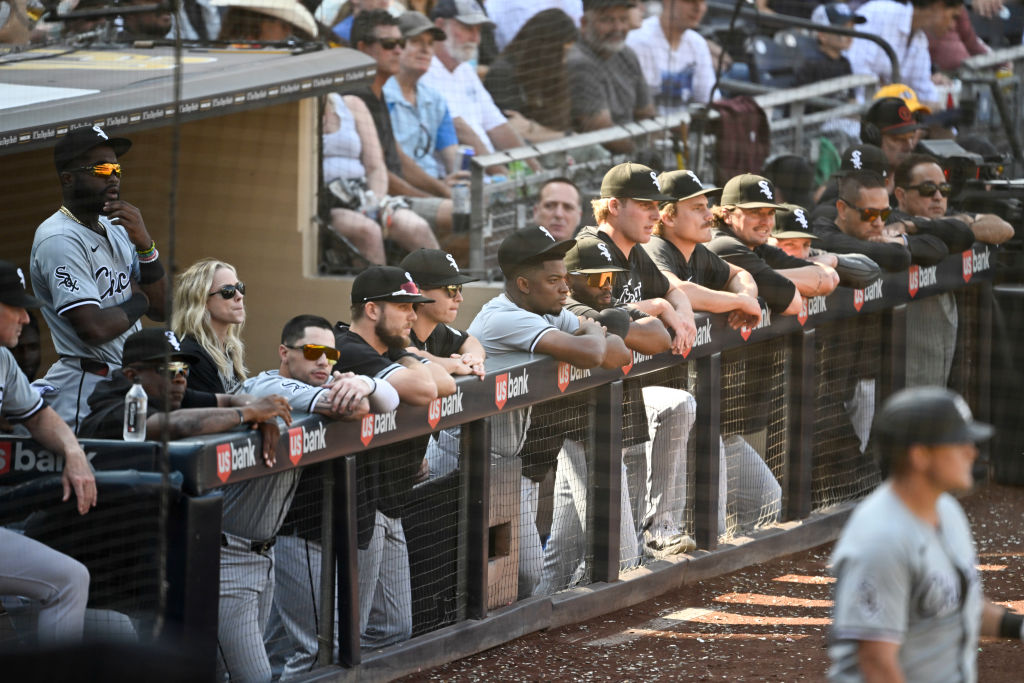To this day, the exact origin of the Great Chicago Fire of 1871 is unknown. It may be easy to blame poor old Mrs. O’Leary, though the conspiracy-minded out there speculate that the blaze might have been a deliberately planned event orchestrated by powerful interests to reshape the city for profit and control. Whether or not these theories hold water, the fire offered a convenient opportunity to rebuild the city with stricter building codes and modern brick and steel structures that allowed the city’s elite to seize prime real estate, drive up property values and transform Chicago into a modern hub of wealth and innovation.
It has taken all of 153 years, but the fire has crossed the South Branch of the Chicago River and reached West 35th Street. The Chicago White Sox now stand at the center of the inferno.
The South Side Baseball Club finished the 2024 season with a record of 41-121, the worst season since the Mets’ inaugural season in 1962 and the most losses in a season since the Cleveland Spiders dropped 134 of 154 in 1899 — a season just before which Cleveland had sent all of its star players to the St. Louis Perfectos, recently purchased by Frank and Stanley Robinson, who, coincidentally, also owned the Spiders.
Do not let the Sox’s white-hot 8-6 finish fool you. This team was not just underwhelming, it was pathetic. The club boasted a roster full of players who would struggle to make any other club in the league — a collection of ballplayers who were, at best, replacement-level talent. Wins Above Replacement (WAR) has become a mainstay for baseball statisticians and, recently, even casual fans. Baseball’s Mr. 50-50, Shohei Ohtani, will likely run away with the National League MVP Award with a total of 9.2 WAR. It is important to remember that WAR does not measure what is average — only what is replacement-level.
Replacement level is loosely defined as a gray area between AAA- and MLB-level talent, and a theoretical team of these limbo-level players would, hypothetically, finish with a 48-114 record. This means that the White Sox finished seven games behind an imaginary team full of 0.0 WAR players.
Within the realm of theory and hypothesis, the Sox were so bad that if we were to double their runs scored in every game this season — conceding ties to the team whose score doesn’t require a multiplier — their record would still have been sub-.500, at 80-82, which would have been good for fourth place in the Central (and also would have ensured that the Seattle Mariners would have reached the postseason over Kansas City).
But back to reality. Chicago’s 27-82 start represented the worst 109-game start since the Philadelphia Athletics — perhaps the first documented instance of “tanking” — began 23-85-1 in 1916. The team’s twenty-one-game losing streak from July 10 to August 6 was the longest MLB had seen since the 1988 Orioles. Their offense totaled just 516 runs, the fewest by any team during a non-strike-shortened season since the 1971 Padres. Five teams — the Brewers, Dodgers, Tigers, Guardians and Rays — had more victories out of their bullpens than the White Sox did as a team, and every team other than the Blue Jays and the White Sox themselves had at least as many victories from relievers as Chicago got from its starters.
Owner Jerry Reinsdorf is approaching his nineties. One would think he feels a sense of urgency for change within his organization. In his year-end letter to fans, he admitted that the 2024 season was a complete failure and accepted full responsibility. “There are no excuses,” he wrote. The nicely worded letter, however, belied the coming leaks that the historically awful White Sox are reportedly looking to cut payroll even further in 2025. Team officials had the audacity to cite declining attendance as a culprit. They’re already looking for shoppers to trade away their lone All-Star caliber talent, starting pitcher Garrett Crochet.
Perhaps the White Sox’s swift decline was not the result of a calculated scheme but rather a classic case of Murphy’s Law, in which every conceivable misfortune seemed to conspire against them. And rather than desperately trying to douse the flames of their misfortunes, the team found it more advantageous to just let everything burn to the ground and rebuild from scratch.
There is some reason for optimism on the South Side. The late-2023 appointment of Chris Getz as general manager demonstrated the team’s commitment to modernizing its operations. Getz reached the post just a decade after hanging up his own cleats as a utility infielder; he oversaw the development of Chicago’s last crop of promising major league-ready talent — all of whom spent 2024 playing for other teams or on the injured list. Getz has been busy rebuilding the foundation of the baseball operations department and catching Reinsdorf’s squad up to the analytics-driven front office that every other team in the league adopted fifteen years ago.
The ashes of the Great Chicago Fire — intentional or otherwise — provided fertile ground for a new city. Twenty-two years after the fire, it dazzled the world with its famed White City. But Reinsdorf, Getz and an inpatient fanbase can’t afford to wait that long: they will instead look to the 1962 Mets they just displaced from the record books, which went from sub-replacement-rate to ticker tape parade in a mere seven years.
Ryan Spaeder is a US Marine Corps veteran, baseball statistician and co-author of the bestseller, Incredible Baseball Stats.


























Leave a Reply